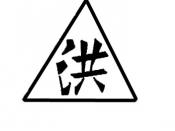Crime can be defined as an act which breaks a Governmental law and is therefore punishable pertaining to such laws. It can be said that this is the ÃÂlegal definition of a crimeÃÂ. Such crimes include those such as murder, abuse and theft. A crime could also be seen as an act that may offend a set of norms such as a moral code, defined as the ÃÂnormative definition of crimeÃÂ. These ÃÂcrimesÃÂ include acts such as blasphemy within a religious culture. Depending on a personÃÂs viewpoint, crime cannot be acutely defined. The environment it occurs in, i.e. culture/society or time period, effectively defines it. This meaning of crime is said to be a ÃÂsocial constructionÃÂ. (Mooney, Kelly, Goldblatt, Hughes, 2007, p.6).
A number of theories currently exist which analyse the causes of crime. The two types of explanations are structural and agency. Structural explanations generally argue that human behaviour is not random or self-determined.
Economic and environmental factors cause individuals to behave in a certain way. Agency-driven explanations argue that human behaviour is moved by choice. A person always has options and can make conscious choices. In terms of the social science approach, it endeavours to take a stance balancing in between the two extremes of the explanation spectrum. (Mooney, Kelly, Goldblatt, Hughes, 2007, p.28).
In looking further into the explanations of crime, I now outline the individually defined explanations of each approach. The structural approach includes three different theories being biological, family and cultural.
The biological explanation argues that patterns of human behaviour can be traced back to an individualÃÂs genetic makeup. (Mooney, Kelly, Goldblatt, Hughes, 2007, p.29-30). It is interesting to note that this approach really does try and prove that there is such a thing as a ÃÂbad seedÃÂ, that for some, criminal behaviour is inevitable...


